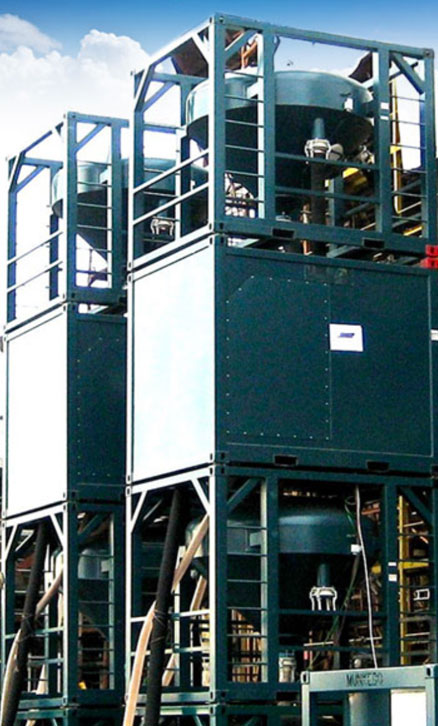
Media Recycling Costs Dive!—At a Dry Dock for Nuclear Submarines

PROBLEM
A European navy needed a method for recovering and recycling steel grit when abrasive blasting the interiors and exteriors of 220-yard-long nuclear submarines that were under construction. Previously, workers removed media from the dry dock with wheelbarrows and other manual methods. Bucket elevators, belt conveyors, and other mechanical recovery systems could not fit in or be appropriately positioned in the dry dock. Furthermore, mechanical systems and manual methods could not retrieve media trapped inside difficult-to-access areas.
SOLUTION
The shipyard purchased six Munkebo Vacuum and Recycling Tower Systems.
- The six Tower Systems simultaneously recovered and recycled spent steel grit created from the blasting of different submarine sections. The sections eventually were welded together to form complete submarines.
- The vacuum systems excelled at removing trapped media from inside crevices, manholes, airlock-door seams, engine parts, spaces between double-hull construction, and numerous other areas where spent media became trapped.
- Each Tower System could recover and recycle up to 27.5 tons at a time, resulting in up to 165 tons of steel grit (27.5 tons x 6 Tower Systems) being continuously recovered and recycled.
OUTCOME
- Because steel grit can be recycled 100 to 150 times, even though it often is 10 times more expensive than expendable media and a 1% media loss usually occurs with each recovery cycle, the dry dock conservatively realized a tenfold cost savings.
- As a result of this savings, the Tower Systems paid for themselves in less the two years. The navy was thrilled with its quick return on investment.
- Besides being far more efficient than manual or mechanical media recovery, the six Tower Systems are safer for workers and the environment.
Abrasive blasting (formerly known as sandblasting) also is called grit blasting, bead blasting, media blasting, soda blasting, dry blasting, sponge blasting, shot blasting, and shot peening. However, sand should never be used when abrasive blasting because breathing abrasive containing crystalline (free) silica can lead to serious or fatal lung disease.

